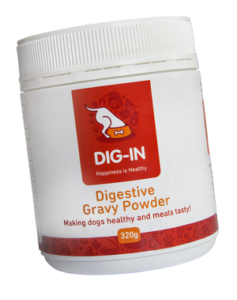 As friendly and welcoming as your dog may be, sometimes it’d be good if they weren’t such hospitable hosts. Take for instance the case of tapeworms. Growing to six inches long or more, these parasites commonly infect dogs, taking up residence in the intestines of their host.
As friendly and welcoming as your dog may be, sometimes it’d be good if they weren’t such hospitable hosts. Take for instance the case of tapeworms. Growing to six inches long or more, these parasites commonly infect dogs, taking up residence in the intestines of their host.
There are two main types of tapeworm: flea and hydatid. Flea tapeworm is the most common and is spread by dogs ingesting fleas that are infected with tapeworm eggs. When dogs ingest the flea, the flea is digested, leaving the juvenile tapeworm to grow and mature. Hydatid tapeworms are less common, and are mostly a risk to hunting or farm dogs that may be more likely to eat offal or the raw meat of native or feral animals.
Symptoms of tapeworm infections
While there may be no obvious symptoms, there are a few signs which may suggest your dog has a tapeworm infection:
- Scooting along the floor. If you notice your dog dragging their bottom along the ground, it’s likely they’re trying to address the irritation caused by a tapeworm infestation. Adult tapeworms are made up of lots of small segments, and as a tapeworm continues to mature and grow, these segments can break off, passing into your dog’s intestine and ultimately causing itching around their backside.
- Biting or licking around the backside. The itching which results from these small tapeworm segments passing through your dog’s intestines and possibly sticking to the fur around your dog’s backside, can cause your dog to bite or lick around their tail.
- Presence of tapeworm segments. While they can sometimes be difficult to spot, tapeworm segments resemble sesame seeds in size and are white or cream-coloured. You may notice these small segments in your dog’s faeces or stuck in the fur under their tail.
- Increased appetite without weight gain. As tapeworms absorb nutrition from their host dog, it can cause your dog’s appetite to increase, without your dog gaining any weight.
Tapeworms are considered ecologically ‘clever’ parasites, as they can infect their host without necessarily causing a great deal of harm. Of particular concern is that tapeworms can be transmitted to humans, either by swallowing an infected flea or by the accidental ingestion of faeces carrying parasitic eggs. Children are most prone to infection, as they’re more likely to be outside in the park or other areas where dog waste may be present.
Treatment of tapeworm infections
If you suspect your dog has tapeworms, a visit to the vet is needed to confirm infection and to then determine an appropriate course of treatment. Thankfully once a diagnosis is made, treatment is generally straightforward – with many modern de-worming medications dissolving tapeworm infestations with a simple tablet or injection.
Of course the best treatment plan is prevention. Staying up-to-date with your dog’s intestinal worm medication is essential for helping your dog to stay parasite free. As the most common type of tapeworm is carried by fleas, it’s important to also stay current with your dog’s flea prevention medication. Consult your vet to determine the best parasite prevention plan for your dog, as many medications will treat both fleas and the full range of intestinal worms.
In addition to your dog’s preventative worming program, you can help keep your dog in prime condition by maximising their health and happiness. The best ways to do that are to feed them a nutritious, largely whole-food based diet; exercising them appropriately; and incorporating Dig-In Digestive Gravy Powder into your dog’s daily meal to help stabilise their digestive function and boost their immune system.






